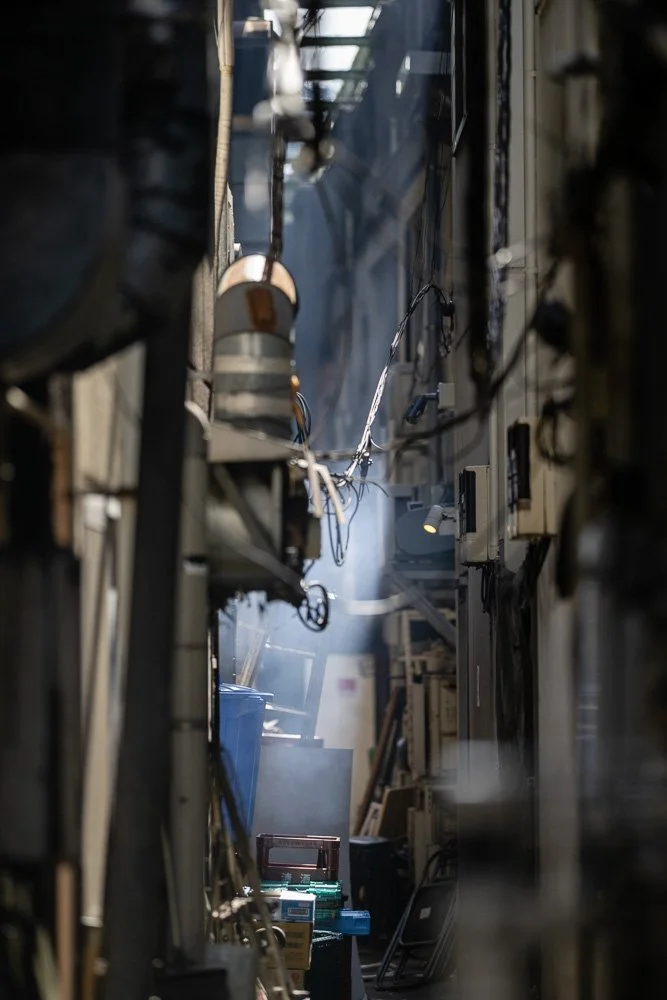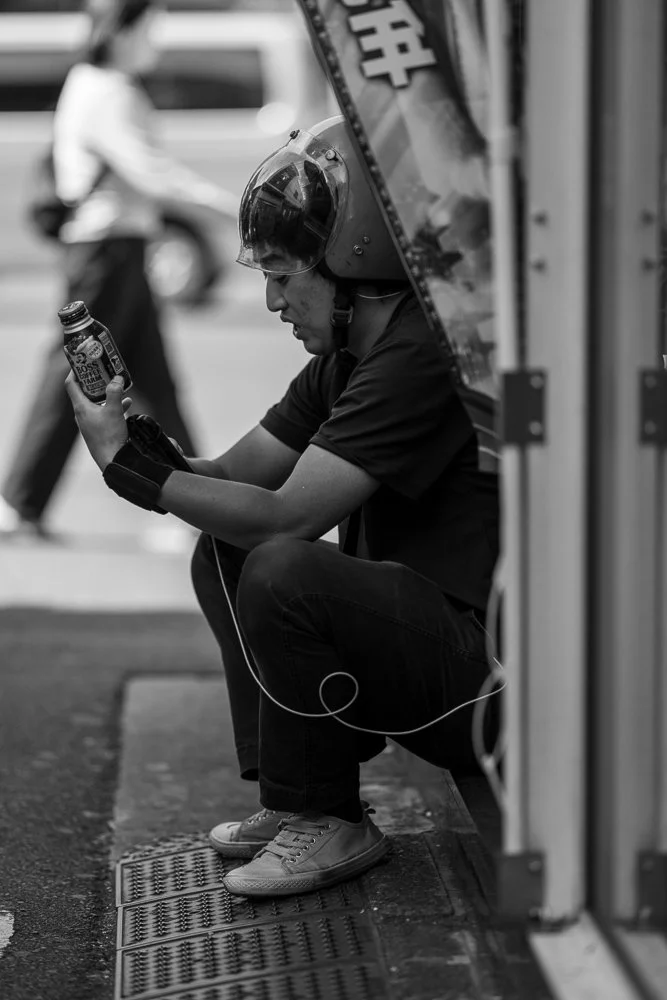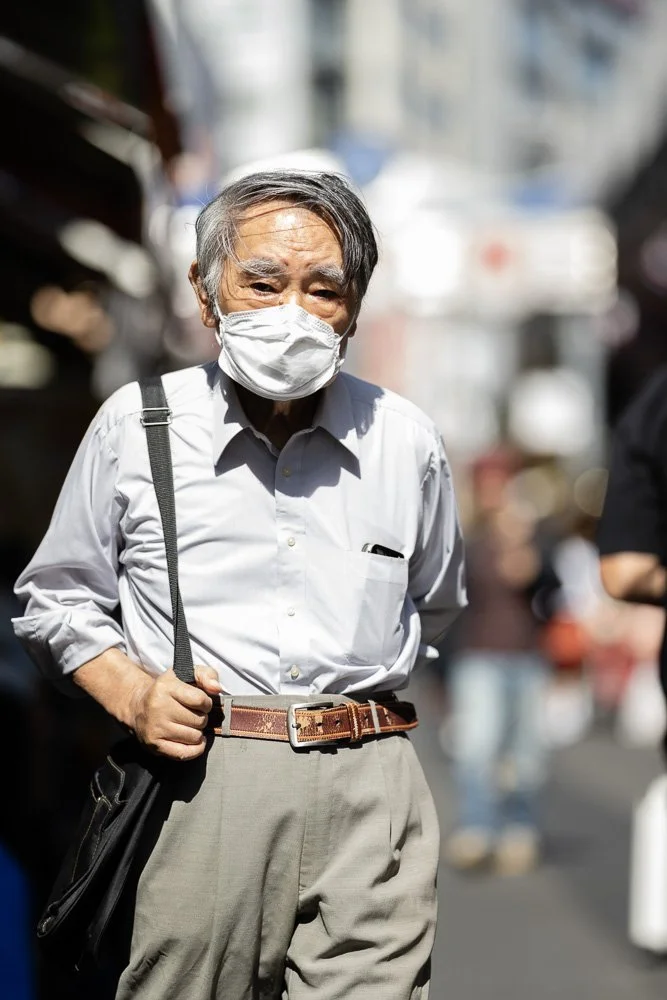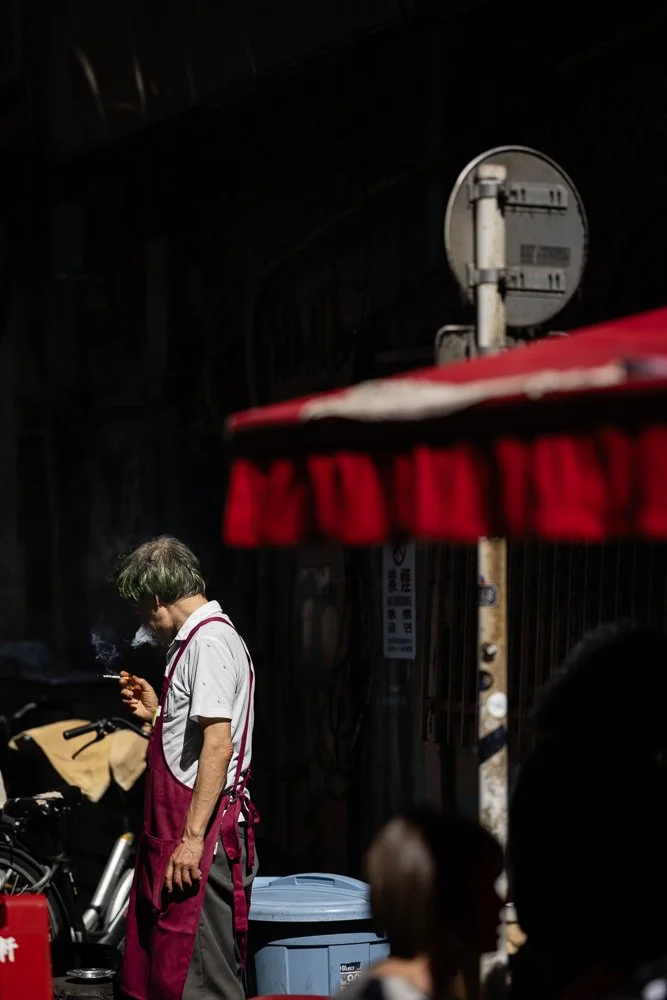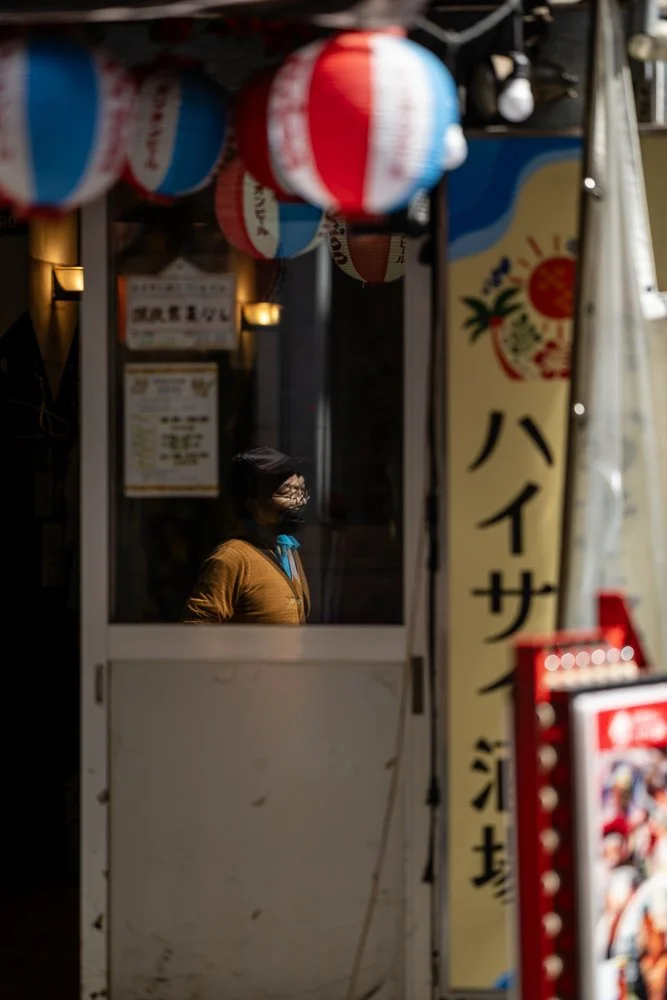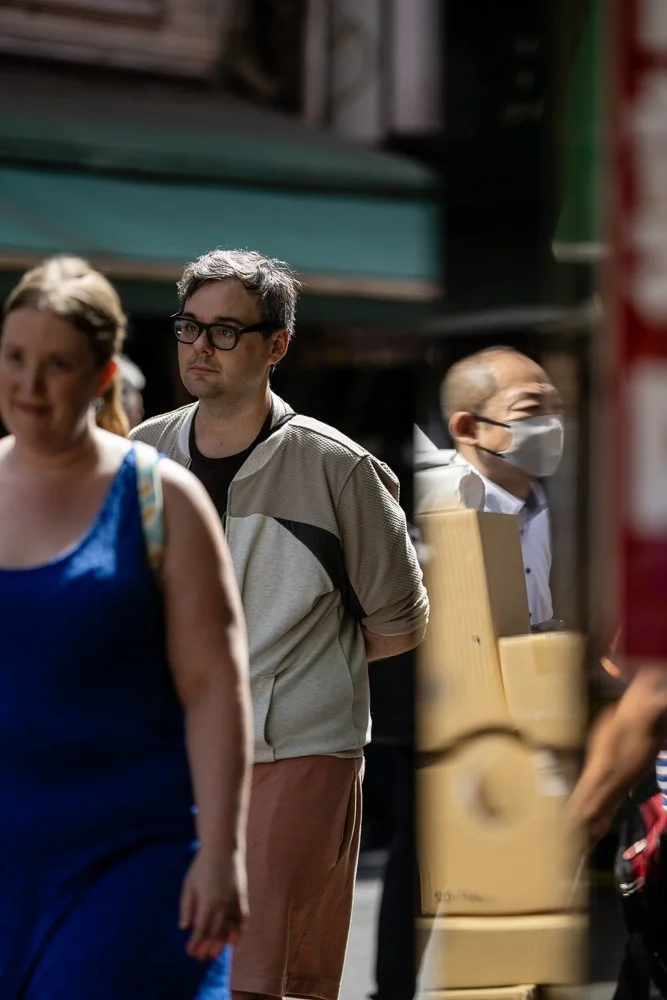Fall In Love with Ueno Market Street Photography
Ueno Market For Street Photography
Ueno is as good a location as any in Tokyo for street photography. This isn’t my first time making that suggestion. I truly believe in this place. The history of Ueno is still evident, and the people are a good mix of locals, tourists, and Japanese visitors, not to mention the incredible light there.
Ueno Market History
Ueno Market, officially known as Ameya-Yokocho or “Ameyoko,” has roots tracing back to the post-World War II era, when it emerged as a black market for candy (ame) and American goods sold by returning soldiers. Its bustling, open-air atmosphere quickly became a fixture in Tokyo’s urban fabric. The maze of narrow lanes, lined with stalls selling fresh seafood, clothing, and street food, has preserved the vibrant, chaotic spirit of postwar Tokyo. Over the decades, Ameyoko has transformed into a symbol of resilience and adaptation, reflecting the city’s recovery and growth while continuing to serve as a hub for both locals and tourists seeking a taste of authentic Tokyo life.
In the realm of street photography, Ueno Market holds a special place thanks to its energetic ambiance and remarkably diverse crowd. The ever-changing mix of vendors, shoppers, and tourists, set against a backdrop of neon lights and aging signage, creates a living tableau that is always in flux. Photographers are drawn here for the spontaneous interactions, gritty textures, and dynamic juxtapositions of old and new. Ueno Market serves as a microcosm of Tokyo itself—offering endless opportunities to capture genuine human moments, vibrant cityscapes, and the unfiltered pulse of Japanese urban life.
The People of Ueno Market
The people are what make a street photograph great. A moment of humanity eternally captured and universally understood regardless of race, language, country or culture. These moments are ever-present in Ueno as its genuine history is that of shared culture.
There are plenty of tourists, couples, families and singles all looking for the Japan experience. Although some gentrification has taken place, much of the market experience remains authentic Japan. The reason is that the locals are still very present as both shopkeepers and customers.
Roaming the streets and alleys there with regularity, I see the same shopkeepers open their shops at the same time in the same way. After a couple of pictures are taken and a smile given, a friendly nod comes back my way, even the occasional ‘good luck today’. A recognition of the hours put into their community. Humbling, in the best of ways.
Ueno Market Light is Awesome
The quality of light at Ueno Market is one of its defining features for street photographers. Early in the morning, soft, golden sunlight filters in at a low angle, casting long shadows that cut through the narrow alleys. This gentle light enhances the textures of the market’s weathered stalls and highlights the steam rising from food vendors, creating an atmosphere and drama ideal for storytelling through photography. As the sun rises higher, the light becomes harsher, producing stark contrasts and deep shadows that emphasize the vibrancy and movement of the crowd.
Later in the day, reflected light from shop awnings and metallic surfaces illuminates faces and adds depth to candid scenes. The mix of natural light and artificial sources—like neon signs, lanterns, and shop interiors—creates a vibrant and dynamic visual palette. This interplay of light and shadow enables photographers to explore different exposures, compositions, and moods, making Ueno Market a constantly evolving and rewarding space for street photography throughout the day.
As always, I would love to hear your story in the comments below. If you feel so inclined, share a coffee with me. I am a flat white kind of guy. Happy shooting, everyone.



